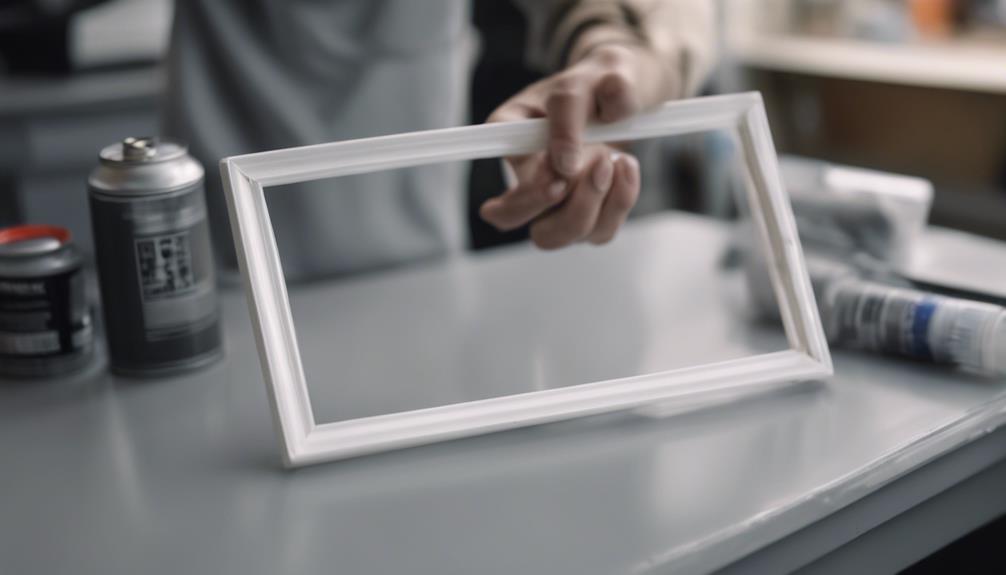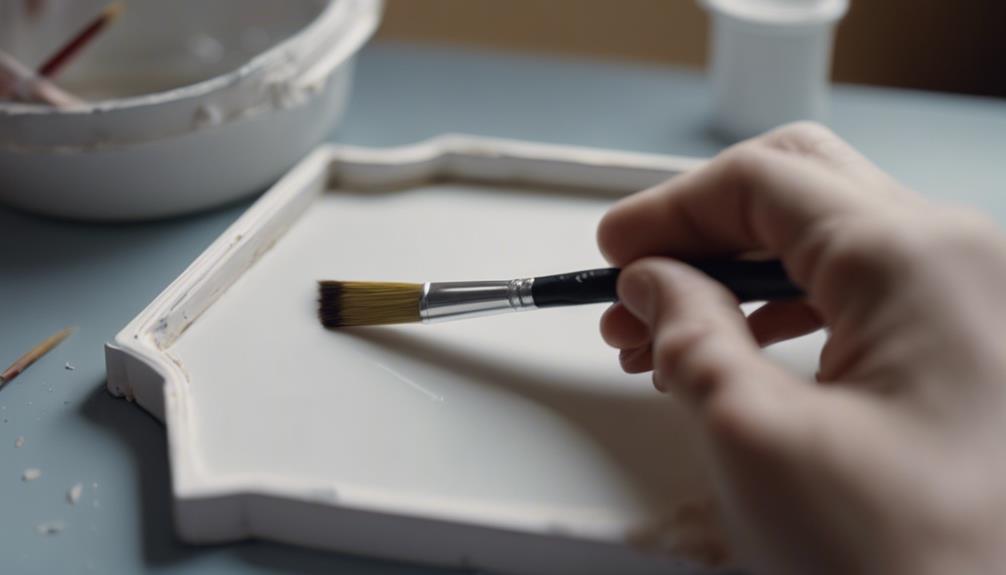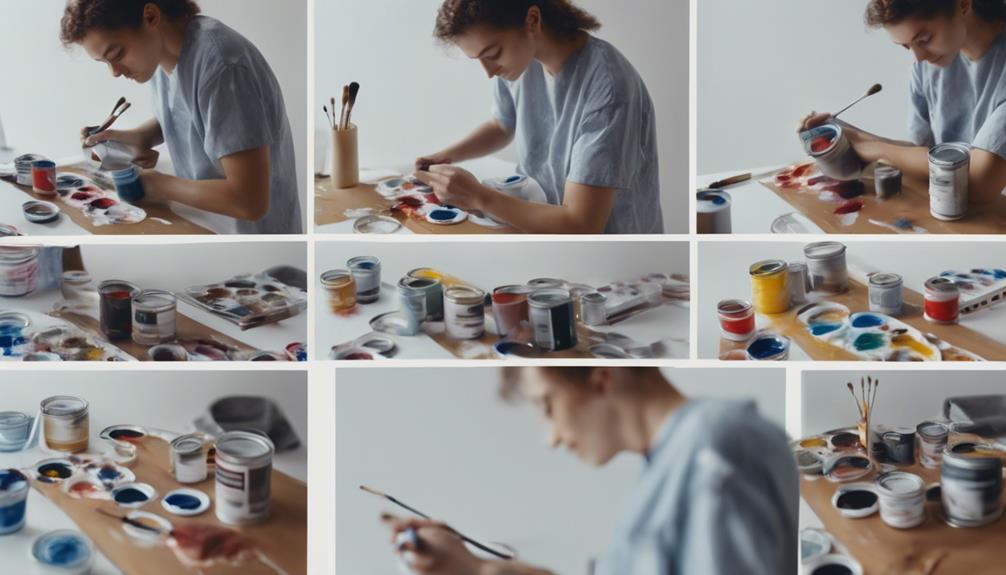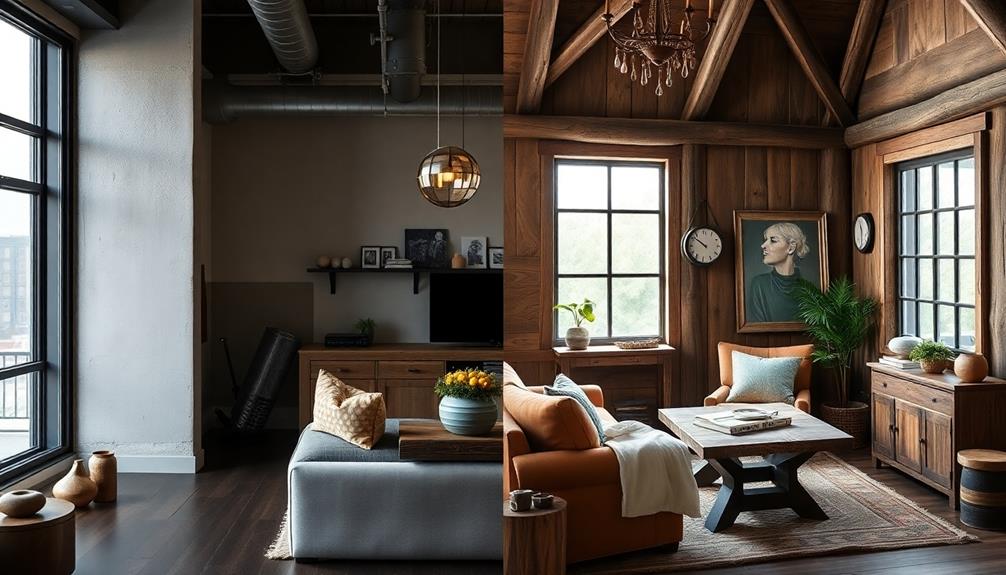You can paint a plastic frame in 3 easy steps. First, prepare the surface by cleaning the frame with mild soap and water, lightly sanding it with 220-300 grit sandpaper, and wiping it down with rubbing alcohol. Next, prime the frame with a thin, even coat of plastic primer, letting it dry completely between coats. Finally, apply acrylic or enamel paint designed for plastic surfaces, using thin, even coats and letting it dry completely between coats. With these steps, you'll have a beautifully painted plastic frame; and by following these details, you'll uncover the secrets to a professional-looking finish.
Key Takeaways
• Clean the plastic frame with mild soap and water, then lightly sand it with 220-300 grit sandpaper to prepare the surface.
• Apply a thin, even coat of plastic primer to the entire frame, allowing it to dry completely before applying additional coats.
• Use acrylic or enamel paint specifically designed for plastic surfaces, applying thin, even coats to prevent drips and ensure a smooth finish.
• Let each coat of paint dry completely before applying additional coats, and gently wipe away dust or debris after achieving the desired color and finish.
• Regularly clean the painted frame with mild soap and water to maintain its appearance, and touch up any chipped areas with matching paint.
Prepare the Plastic Surface
Clean your plastic frame thoroughly with mild dish soap and warm water to remove dirt and oils, ensuring an important bond between the plastic and paint. This essential step will help the paint adhere evenly and prevent peeling.
Once clean, lightly sand the surface with 220 to 300-grit sandpaper in a circular motion to further enhance paint adhesion. This will create a smooth surface for painting.
Next, wipe down the plastic frame with rubbing alcohol to remove any remaining impurities. This step is vital in ensuring a strong bond between the plastic and paint.
After cleaning and sanding, your plastic picture frame is ready for painting. Remember to choose a spray paint specifically designed for plastic surfaces, and make sure the primer is dry before applying the paint.
With these steps, you'll be well on your way to creating a beautifully painted plastic frame that will last.
Prime the Frame for Painting

Now that your plastic frame is prepped and ready, it's time to prime it with a plastic-specific primer to establish a strong bond between the paint and the frame. This critical step guarantees a durable and long-lasting paint job.
To prime your frame effectively, follow these essential steps:
- Apply a thin, even coat of plastic primer to the entire frame, making sure to cover all surfaces.
- Allow the primer to dry completely, following the manufacturer's instructions, before applying additional coats.
- For best results, apply two coats of primer, allowing each coat to dry before applying the next.
- Work in a well-ventilated area, and avoid applying primer in direct sunlight or extreme temperatures.
Apply Paint and Finish

With your plastic frame properly primed, you're ready to apply a durable and visually appealing paint job that will enhance its overall appearance. Use acrylic or enamel paint specifically designed for plastic surfaces for best adhesion and durability.
Apply thin, even coats of paint to prevent drips and guarantee smooth coverage on the plastic frame. Consider adding decorative touches like stencils or weathering effects for a personalized look. Allow each coat of paint to dry completely before applying the next layer to avoid smudges or uneven finish.
Don't rush the process – let the paint dry completely between coats to achieve a smooth, orange peel-free finish. Once you've achieved the desired color and finish, use a soft cloth to gently wipe away any dust or debris that may have settled on the frame.
Frequently Asked Questions
How to Paint a Plastic Frame?
When you're wondering how to paint a plastic frame, you'll want to start by cleaning it thoroughly with mild soap and water to remove dirt and debris.
A plastic-specific primer is essential for better paint adhesion and a smoother finish.
Then, apply 2-3 coats of plastic-friendly paint, allowing each coat to dry before adding the next.
How Do You Paint Plastic Easily?
As you begin painting plastic, envision a blank canvas waiting for your creative touch.
To paint plastic easily, start by preparing the surface with a gentle sanding and a wipe-down with rubbing alcohol. This essential step guarantees a strong bond between the plastic and paint.
Next, apply a primer specifically designed for plastic surfaces, followed by 2-3 coats of plastic-friendly paint.
What Kind of Paint Will Stick to Plastic?
When it comes to painting plastic, you'll need a specialized paint that adheres well to plastic surfaces. Look for acrylic, enamel, or spray paint specifically labeled for multi-surface use or plastic surfaces. These paints are formulated to bond with plastic, ensuring a durable and long-lasting finish.
Remember to always prepare the surface by sanding and cleaning, and consider applying a primer designed for plastic surfaces for best results.
What Do You Use Before Painting Plastic?
Before you start painting plastic, you'll need to prepare the surface. Unlike wood or metal, plastic requires a special primer to guarantee a strong bond between the paint and the surface.
You'll want to use a primer specifically designed for plastic surfaces, which helps the paint adhere better and provides a smooth base for painting. This vital step is often overlooked, but it's essential for a durable and long-lasting finish.
Conclusion
As you step back to admire your handiwork, the newly painted plastic frame stands before you, reborn. The once-dull surface now radiates with vibrant color, its transformation a tribute to your creativity and perseverance.
Like a phoenix rising from the ashes, your frame has emerged from its former mediocrity, ready to showcase your favorite memories with renewed elegance and sophistication.










